Captain Jack E. Helmann, U.S. Navy: A Career on Navy Destroyers
Much has changed on Navy ships over the centuries – sail converted to steam, steel replaced wood, and missiles supplemented guns, just to name a few. Yet with all these changes, fundamental truths remain. Navy ships carry the U.S. flag to the four corners of the globe, serving as ambassadors in the countries they visit and as strong reminders of U.S. military power and resolve. Navy ships also require a team of special people pulling together to accomplish the ship’s mission, enduring the perils of the sea, long separations from family, and the risks associated with war. Captain Jack E. Helmann, U.S. Navy (Retired), knows these challenges all too well, having served on five Navy destroyers over the course of his twenty-four-year Navy career. He also knows the strains and responsibilities of command, having been the commanding officer of the guided-missile destroyer USS Berkeley (DDG-15) for over two years. This is his story.
Jack was born and raised in Hardin, Montana, a small town located about seventeen miles from the Little Big Horn Battlefield, where General George Armstrong Custer made his famous last stand. Jack’s father was a jack-of-all-trades, doing carpentry, selling insurance, running a seed and feed store, and even building a 1,000-hen egg ranch, where Jack learned about hard work shoveling chicken manure as a boy. Jack’s mother was a schoolteacher who took a break from teaching while her three children were young. She returned to teaching after Jack’s brother, who was ten years younger than Jack, started school.
Jack attended Hardin public schools, including Hardin High School. He enjoyed sports and played football, basketball, and track, while still managing to do well in school. He graduated in June 1956 and enrolled in Montana State College in Bozeman in the fall. Again, he did well, graduating in June 1960 with a bachelor’s degree in mathematics. Attending college gave him a deferment from the peacetime draft, but as graduation neared, he knew he would have to give the Army two years of his life or find another service alternative. He initially looked at the Air Force, but because he wore glasses, the Air Force said no. He then visited the local Navy recruiter, who gave him a one-hour written exam. After scoring Jack’s exam, he simply told Jack “You’re in.”
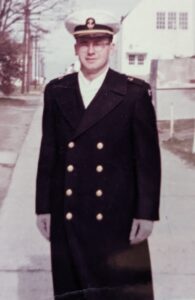
Although it sounded like a done deal, Jack still had to pass a physical, which he flew to Seattle to take. After passing the physical, he returned to Hardin to do carpentry work until it came time to report to Officer Candidate School, or “OCS”, in Newport, Rhode Island. On his way to OCS, he ran into a high school buddy who was heading there, too. They were both assigned to Kilo Company, where they learned the basics of being a Navy officer, including engineering, navigation, weapons, damage control, and naval etiquette. He graduated twenty-third in his class in December 1960 as a newly commissioned ensign (O-1) in the U.S. Naval Reserve. He also received orders to join the crew of the USS Farragut (DLG-6), a brand-new guided missile destroyer leader just commissioned on December 10. He reported to the ship in December 1960.
In the spring of 1961, Jack got underway on USS Farragut from its homeport in Mayport, Florida, to conduct training in the Caribbean, including gunfire support training at the Culebra Island firing range, located about fifty miles from San Juan. The ship also made port calls to the U.S. Navy Base at Guantanamo Bay, Cuba, and was sailing off the south coast of Cuba on April 17 when the failed invasion at the Bay of Pigs occurred. USS Farragut was told to be ready to provide gunfire support when directed, but the order never came. Accordingly, the ship completed its training and returned to Mayport without incident.
Since Jack was the most junior officer on Farragut and had no prior Navy experience, he was assigned all sorts of odd jobs until he had been onboard six months. Then the ship sent him to Anti-Submarine Warfare (ASW) School to learn how to operate and manage Farragut’s ASW capabilities. When he returned, he became the ship’s ASW Officer, responsible for the ship’s team of skilled enlisted sonar operators whose mission it was to locate any submerged Soviet submarines that might be lurking in the vicinity.
By November 1961, USS Farragut was ready for her first cruise. She set sail from Mayport headed for northern Europe after a quick stop in Bermuda. The first stop was Portsmouth, England, where the ship spent a few days before heading to the crew’s favorite destination, Malmo, Sweden. There Farragut’s captain, Commander Roger Spreen, established three sections for the officers to rotate through: the duty section for those officers needed to keep the ship operational at all times; the liberty section for those officers who were free to enjoy all the city of Malmo had to offer; and the party section for those officers who would represent the ship at any official events in Malmo. Jack and the other officers fell in love with the city and its young ladies and hated to leave.
After Sweden, USS Farragut headed to Copenhagen, Denmark, and then to Hamburg, Germany, where the ship spent ten days. The stay in Hamburg was so long, and the sailors enjoyed it so much, that by the end, the crew had grown tired and was happy to stand watch on the ship rather than go ashore on liberty. Things got better during the next port call, which involved a return visit to Portsmouth, England, just in time for Christmas. A British ship hosted Farragut’s visit and the executive officer (XO) of the British ship invited Jack to his house to meet his family. Unfortunately, on Christmas Day, Jack had duty and had to stay on Farragut along with four or five other officers on duty. It turned out to be not so bad, though, because the commanding officer of the British aircraft carrier HMS Ark Royal invited Jack and the other officers on duty to his ship for a drink or two (unlike U.S. Navy ships, Royal Navy ships serve alcohol onboard). After clearing the excursion with Captain Spreen, Jack and the rest of the officers in the duty section celebrated a little Christmas cheer together with Royal Navy officers onboard Ark Royal.
From Portsmouth, USS Farragut sailed to Lisbon, Portugal, and then to the Island of Minorca – the birthplace of Admiral David Farragut’s grandfather – in the Mediterranean Sea off the coast of Spain. Then it was time for Farragut to operate with the other ships of the U.S. Sixth Fleet in the Mediterranean, which it did for the next two months. During this time, the ship made additional port calls in Naples and Sicily and stopped to drydock in Toulon, France. Finally, it came time to head back across the Atlantic to the ship’s homeport in Mayport, Florida, which proved exciting because the ship had to steam through a hurricane for twenty-four hours.
Jack grew in confidence and experience throughout the cruise, not only as the ship’s ASW Officer, but also on all the various aspects of seamanship new officers must master to operate a warship in combat, should the time come. Captain Spreen recognized Jack’s exceptional talents and one night, while Jack was on the bridge standing Junior Officer of the Watch, asked Jack if he had considered applying for the regular Navy. Before Jack could answer, Captain Spreen added, “If you don’t, I’ll make you the 1st Lieutenant,” which meant he would be responsible for the general upkeep and maintenance of the ship – a never-ending and thankless job. Not quite sure whether the captain was joking, Jack replied he’d do it. He put in a package to convert from the U.S. Naval Reserve to the regular Navy and it was approved. Jack was now officially part of the Navy’s career officer corps.
USS Farragut arrived in Mayport in late spring 1962 and soon detached Jack to attend Destroyer School in Newport, Rhode Island. Not only did he improve the skills he’d learned on the job thus far, but he also spent a lot of time learning about a destroyer’s engineering plant, something he had little experience with. In fact, part of the training involved getting underway and actually running an engineering plant, a job normally reserved for the ship’s enlisted crew. The class also practiced damage control skills on the USS Buttercup, a full-size mock-up of a section of a ship floating in a pool inside a building where instructors introduce a series of flooding events that start to sink the ship. The class’s assignment was to stop it from sinking, which the instructors made sure never happened. This time, though, Jack’s class learned about the event ahead of time, so they went into the Buttercup with a plan. Although they won the battle by saving the ship, they lost the war because the instructors made them do the event again. This time, the instructors were ready, and the Buttercup sank despite the class’s best efforts to prevent it.
Jack completed the six-month Destroyer School in December 1962 and reported to USS Jonas Ingram (DD-938), another destroyer homeported in Mayport, Florida. He was now a Lieutenant Junior Grade (O-2), having promoted while at Destroyer School after completing two years as an ensign. He was assigned as Weapons Officer, responsible for the ship’s three big 5-inch/54-caliber guns, four 3-inch guns, six torpedo tubes, and all the depth-charge and hedge-hog launchers.
Jack’s promotion put extra money in his pockets, so he purchased what every young Navy officer should have – a Triumph TR4 convertible two-seat sports car. It didn’t last long, though, as he wrecked it in an accident a year later, breaking his ankle and wrist. It turned out to be a good thing because when he was at Naval Hospital Jacksonville recovering, he met a Navy nurse, Lieutenant Cynthia Snyder, who was also being treated at the hospital in the same ward, and they began to date.
Jack gained valuable operational experience onboard USS Jonas Ingram. After workups in the Atlantic and the Caribbean during the latter part of 1963, the ship deployed to the Mediterranean Sea, operating with the aircraft carriers and other ships of the U.S. Sixth Fleet. During down times, Jack and the rest of the crew enjoyed some great liberty during port calls on the French and Spanish Rivieras, a perk of spending many months deployed on a Navy ship away from family and friends. Jack spent almost two years onboard USS Jonas Ingram, qualifying as Officer of the Deck and Command Duty Officer.
In the fall of 1964, Jack detached from USS Jonas Ingram with orders to report to the Naval Postgraduate School in Monterey, California, where he earned a master’s degree in operational research. During Jack’s time at Monterey, he married Cynthia, the Navy nurse he met at Naval Hospital Jacksonville. Cynthia also gave birth to their first daughter, Susie, at Monterey, yet Jack still somehow managed to play golf at the great courses in the area, including Pebble Beach. Jack detached from Monterey in June 1967, heading back to sea at the height of the Vietnam War.
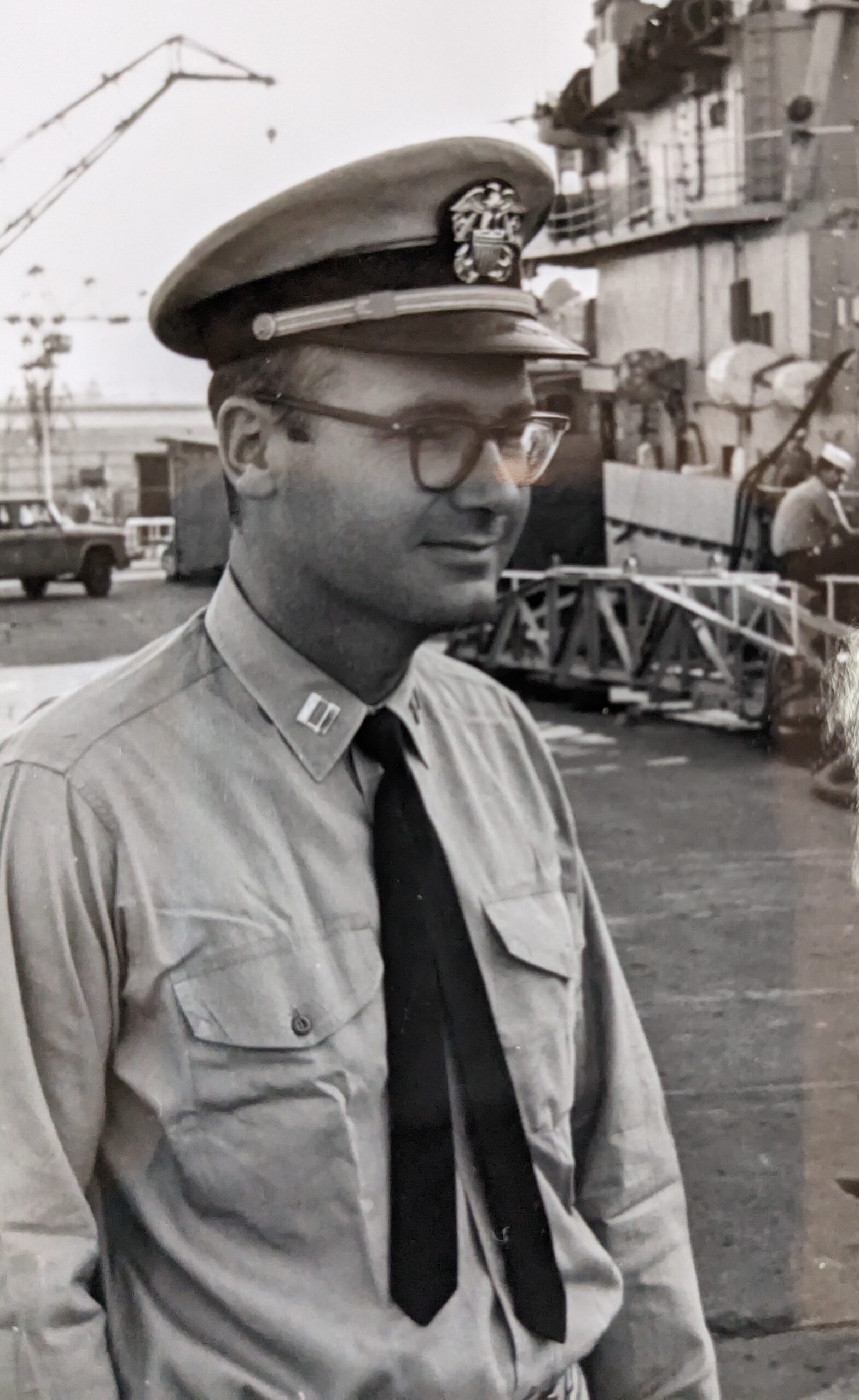
Jack received orders to report to USS Waddell (DDG-24), a guided-missile destroyer homeported in Long Beach, California, for his Department Head tour as the Weapons Officer. The ship was equipped with Tartar surface-to-air missiles, which were designed to shoot down any enemy aircraft that might threaten the ship or other allied forces operating in the vicinity. To learn how to operate and manage the Tartar system, Jack attended a twelve-week missile school in Vallejo, California. When Jack finally reported onboard USS Waddell, the ship was undergoing an extensive overhaul, including a Tartar missile system upgrade, at the Long Beach Naval Shipyard. By chance, both the commanding officer and executive officer were on leave the day he reported. Because he was then the senior officer onboard, he immediately became the acting commanding officer even though he’d never stepped foot on the ship before. His time as acting commanding officer didn’t last long, but it did foreshadow the major responsibilities he would assume as the ship prepared to deploy in support of the Vietnam War.
USS Waddell emerged from the shipyard in February 1968. It then began training off the coast of California to get the crew back to full fighting capability. The ship earned a letter of commendation for its successful missile firings before sailing in July with the other ships of Destroyer Squadron 13 to Yokosuka, Japan, via Pearl Harbor and Midway Island, for a change of homeport. This meant Cynthia and Susie also moved to Japan, because from the day the ship arrived on August 1, Yokosuka would be the place Waddell’s crew called home.
Shortly after arriving in Yokosuka, USS Waddell got underway again, this time to conduct combat operations off the coast of Vietnam. The ship loaded ammunition, including thousands of rounds for its two big 5-inch/54-caliber guns, and then headed for the “gun line” off the Vietnam coast to provide fire support for U.S. and allied troops ashore fighting North Vietnamese and Viet Cong forces. Over the course of the next year, Waddell would be repeatedly called upon to shell enemy positions.
As Weapons Officer, the gun line assignments put Jack and the men operating the Waddell’s guns to the test, night and day. Not only did they fire thousands of rounds over the period, but at one point, they were the only ship with usable ammunition able to provide the fire support the troops ashore so desperately needed. That occurred after fuse problems with the 5-inch shells caused barrel explosions on two allied ships, resulting in an order to cease using the ammunition until the issued could be rectified. When the problem was traced to a faulty gas seal in the base of the shell, Waddell returned to Subic Bay so Jack and his men could inspect over 10,000 rounds to find ones without faulty seals. Finding around 2,000 good rounds, they loaded the shells on Waddell and headed back to the gun line to parse out the shells across the many calls for support they received in the absence of other ships with usable ammunition.
During one fire support mission, Jack received a desperate call from a Marine ashore asking for help. He told Jack their position was being overrun and he needed rounds right on top of their position immediately or they would be wiped out. Normally, fire was restricted to be outside a certain distance from allied ground forces, but as Jack could hear the gunfire over the radio, he knew this instance called for an exception to the rule. He told the Marine he would do it and directed the ship’s 5-inch guns to put their ordnance on the Marines’ position. As the Marines would be expecting the shelling, they could at least take cover to attempt to protect themselves from the explosions. The enemy would not have the same advantage. The tactic worked and the Marine radioed back that the enemy retreated once the shelling started. He then thanked Jack for the ship’s support. It was one time Jack knew Waddell’s actions were making a difference. He gets emotional when he talks about the event to this day.
Firing thousands of rounds of 5-inch high-explosive and other types of shells around the clock was dangerous work. The constant firing made the gun barrels so hot the paint peeled off. When the guns misfired, the barrels had to be flooded with water to reduce the chances the errant shell still somewhere in the barrel would explode. Making matters more complicated, the guns were fully automatic, being loaded by a conveyer of trays carrying powder charges and shells from magazines located below decks. At any given time, up to twenty powder charges and shells might be on trays somewhere between the 5-inch gun and the magazine. If a round exploded anywhere along the way, it could set off a deadly chain reaction leading to the magazine blowing up and taking the rest of the ship with it.
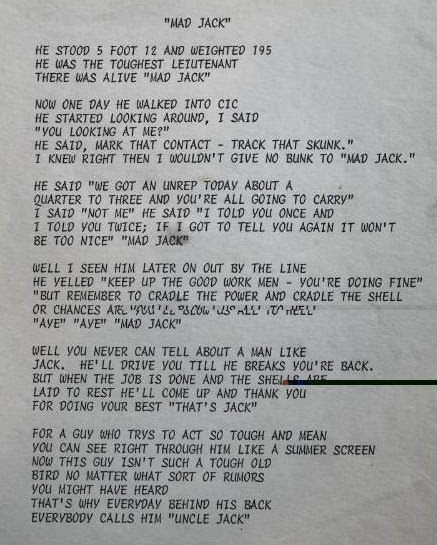
Jack experienced a particularly difficult misfire on Waddell’s aft 5-inch gun. Everyone in the stern of the ship was evacuated except the men in the engineering spaces because they had to keep the ship running. In addition, a damage control firefighting team was stationed all the way at the stern. Then, Jack and two gunner’s mates entered the gun mount and painstakingly began clearing the trays in the conveyer of ammunition. It required meticulous care and attention to detail because a single spark could have ignited the powder and blown up the turret, killing Jack and his two gunner’s mates, not to mention sinking the ship. An hour later, they removed the problem shell and powder charge from the gun and threw them over the side. Shortly thereafter, the gun was back in action firing rounds to the shore.
Most often, USS Waddell provided ground support fire off the coast of South Vietnam, including as far south as the Mekong River delta, but on occasion it operated off the coast of North Vietnam. On one occasion in September 1968 near the “demilitarized zone” (DMZ) between the South and the North, USS Waddell and the heavy cruiser USS Saint Paul (CA-73) closed to within two-and-a-half miles from shore to rescue the crew of a downed U.S. attack bomber.
Another ship on the gun line at times was the mighty battleship USS New Jersey (BB-62). The New Jersey was the only World War II battleship to be recalled for duty during the Vietnam War and Jack got to see it providing fire support with its nine 16-inch guns firing high explosive shells over twenty-miles inland. At one point, USS Waddell moved between the coast and the New Jersey to fire its own 5-inch guns. As it did, Jack could hear the blast from the New Jersey’s huge guns and watch their rounds arc overhead on their way to the targets ashore. It was an awesome display of firepower from a bygone era.
To keep USS Waddell on the gun line, the ship frequently replenished at sea rather than returning to port to load ammunition, food, fuel, and other supplies. This meant coming close alongside an oiler or other supply ship to run cables and hoses between the two ships to conduct the resupply. It’s one of the most dangerous maneuvers at sea as it requires expert ship handling on the part of both ships, and Jack and the rest of USS Waddell’s crew became quite good at it because they had to conduct the maneuver two or three times each week to keep the ship supplied. Occasionally, though, Waddell did return to port. Such was the case in December 1968 when she returned to Yokosuka for an overhaul and the Christmas holiday. The break was short-lived, as Waddell was back on the gun line in January and would remain in the waters off Vietnam for much of 1969.
By the time USS Waddell had finished its 20-month stint on the gun line off the coast of South and North Vietnam, it had provided 192 days of gunfire support during 614 missions and fired 24,141 five-inch rounds. Jack was awarded the Navy Achievement Medal with a “V” for valor for his service, and he also earned the Combat Action Ribbon because the ship had come under enemy fire when it operated close to shore.
Jack detached from USS Waddell during the summer of 1970 and transferred to Arlington, Virginia, to work for the Director of Anti-Submarine Warfare on the Chief of Naval Operations (OPNAV) staff. While Jack was assigned there, Cynthia gave birth to their second daughter, Kathy. Jack followed his year on the OPNAV staff with a year at the Naval War College in Newport, Rhode Island. He completed his course work in June 1972.
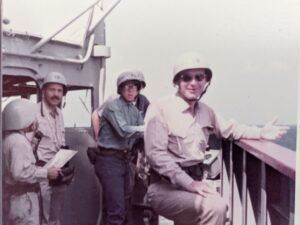
Now a Lieutenant Commander (O-4), Jack received orders to be the executive officer (XO) of the guided missile destroyer USS Lynde McCormick (DDG-8), homeported in San Diego, California. As the XO, he would be the second in command of a warship manned by over 350 sailors and armed with Tartar surface-to-air missiles, two 5-inch/54-caliber guns, torpedoes, and anti-submarine weapons. He reported in the summer of 1972 while the ship was undergoing an overhaul in the yards. Thereafter, the ship completed its refresher training and deployed to the Western Pacific.
In October 1973, war broke out in the Middle East as Egyptian and Syrian forces attacked Israel to begin the 1973 Arab-Israeli War. The USS Lynde McCormick, still in the Western Pacific, joined with the aircraft carrier USS Hancock (CVA-19) and other U.S. ships in the battle group to speed across the Indian Ocean to be on scene in case the carrier’s air power was needed to help Israel. As no replenishment ships accompanied the battle group, the smaller ships like USS Lynde McCormick had to get their fuel and supplies from what was available aboard the much larger aircraft carrier. Lynde McCormick ran so low on provisions that they held a fishing contest from the stern of the ship and the mess cooks served up the fish they caught to the crew. Eventually, the battle group came within range of Diego Garcia, a U.S. Navy base on a small but strategic island in the middle of the Indian Ocean, where replenishment ships refilled the destroyer’s near-empty fuel tanks and stores.
When the battle group arrived in the Red Sea, the Lynde McCormick’s crew put on battle dress and cruised with the other U.S. ships toward the conflict. Although the situation was tense, U.S. Navy intervention was not required, so the Lynde McCormick made a port call in Massawa, Ethiopia (today, Massawa is part of Eritrea). The Ethiopian people welcomed the ship with open arms, but they were very poor. Jack saw an Ethiopian destroyer (a former U.S. Navy ship) at the Ethiopian Navy Base in Massawa. It was remarkable because a house had been constructed on its stern for Emperor Haile Salassie. Jack enjoyed eating an Ethiopian dinner onboard the ship. The Lynde McCormick also chartered the only plane owned by Ethiopian Airlines to fly half the crew to the capital in Addis Ababa and back on one day and the other half the crew on the next day to do some shopping and enjoy a little liberty.
With the situation in the Middle East resolved in Israel’s favor, the Lynde McCormick retraced its steps across the Indian Ocean and then the Pacific Ocean, arriving back in San Diego in January 1974. Jack stayed onboard as XO until he transferred in the spring of 1974 to become the Chief Staff Officer for Destroyer Squadron (DESRON) 13. The DESRON commanded a squadron of eight destroyers and embarked on USS Berkeley (DDG-15) as the squadron’s flagship. As the Chief Staff Officer, Jack was second in command, responsible together with the commander for making sure the ships in the squadron were manned, trained, and equipped in a combat-ready condition when it came their turn to deploy.
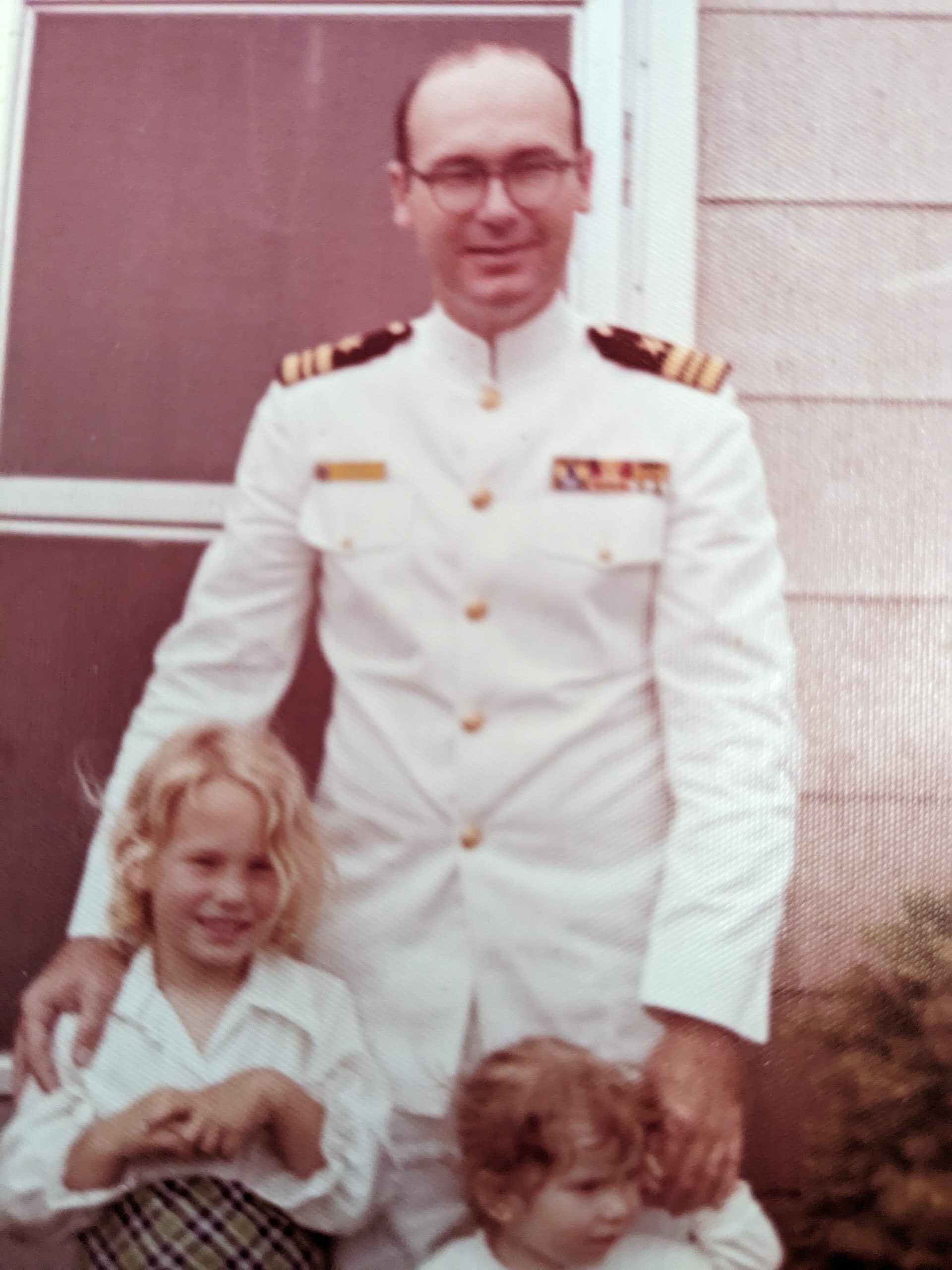
Jack spent eighteen months as Chief Staff Officer of DESRON 13 before transferring to shore duty with the Navy Materiel and Manpower Command in San Diego. There he promoted to Commander (O-5) and was selected for command. He then transferred to Prospective Commanding Officer (PCO) School in Newport, Rhode Island, to learn what he needed to know to command his own destroyer. When he spoke to his detailer to learn what ship he would get command of, he was given two choices. The first ship he described as a “basket case” and not one he wanted. The second was USS Berkeley (DDG-15), a ship he was intimately familiar with because it had been DESRON 13’s flagship when he was the Chief Staff Officer. The only issue was Berkeley would be in the shipyards being overhauled for much of his time in command. Having spent a lot of time in the shipyards with his previous ships, he knew what to expect, so he chose USS Berkeley.
Jack assumed command of USS Berkeley at a change of command ceremony in January 1977. As commanding officer, he was wholly responsible for the 3,300-ton warship and its crew of 354 officers and enlisted sailors. The ship sailed under Jack’s command to Bremerton, Washington, in May 1977 to offload its weapons and then proceeded to the Puget Sound Naval Shipyard for a one-year overhaul. As the crew’s berthing spaces were being refurbished, as well, the crew could not live onboard. Accordingly, the enlisted crew moved to a berthing barge. Immediately, complaints started coming in from the crew that the berthing barge was a “shithole”. Jack took up the issue with the shipyard XO who said nothing could be done and there were no alternatives.
Jack found the XO’s answer unacceptable. He reported the berthing barge conditions to his DESRON commander and then to the staff of Commander Naval Surface Force Pacific, a two-star admiral who apparently expressed Jack’s displeasure to the shipyard commanding officer in no uncertain terms. Shortly thereafter, the shipyard commanding officer upgraded the berthing barge and its machine shop so Berkeley’s crew could make some of the parts the ship needed for the overhaul. While the incident made Jack unpopular with the shipyard commanding officer, it made him very popular with his crew because they knew he would go to bat for them. They, in turn, would do the same for Jack.
This proved to be the case when Berkeley completed its overhaul almost a month early on May 1, 1978. Jack started a rigorous training schedule to get the ship back to fighting condition after the time in the yard, with underway periods for refresher training, weapons acceptance training, and general warfighting training. Most important was preparing the ship for its Operational Propulsion Plant Exam, or “OPPE”. The OPPE inspection focuses entirely on the ship’s ability to run its engineering plant and is a make-or-break event for commanding officers. Ships that pass the OPPE continue with their training schedule. Ships that fail their OPPE retake it, but usually with a new commanding officer because the one in charge when the ship failed the OPPE is relieved. Jack’s crew rose to the occasion and passed the rigorous OPPE inspection with flying colors, making Jack very proud of all they had accomplished.
Jack made sure the families of his crew knew how proud he was of Berkeley’s sailors. Every quarter he sent out a newsletter to the crew’s spouses and parents, keeping them informed of what was happening onboard USS Berkeley and highlighting the work of individual sailors. After one such quarterly newsletter went out, Jack received a letter from the mother of a sailor Jack commended in the newsletter for doing a good job. Among other things, the letter said, “thank you for making my son the man I knew he could be.” Jack never forgot that letter. He had it framed and hung it in his office until he retired, reminding him of the serious responsibility he had been entrusted with as a leader to not only accomplish his military mission, but also to take care of his people and develop their full potential.
After his successful command-at-sea tour and a change of command ceremony aboard USS Berkeley in February 1979, Jack returned to the Office of the Chief of Naval Operations (OPNAV) staff to serve as the czar for all Tartar missile systems worldwide. Many allied nations, including The Netherlands, France, Italy, Japan, and Australia, had installed the Tartar surface-to-air missile system on their navies’ ships. Jack worked with all these navies to help manage their Tartar missile programs. He often traveled to visit allied navies to address any questions or issues they were having with their Tartar systems, calling on his many years of experience working with the missiles onboard U.S. guided missile destroyers. On occasion, Cynthia, Susie, and Kathy could accompany him, so the entire family got to see England and Germany together. Jack also served on the design committee for the Navy’s next generation of destroyers, the USS Arleigh Burke class of guided missile destroyers, using his vast experience with destroyer weapons systems to help shape the design of Navy destroyers for years to come.
In 1984, it came time for Jack to transfer again. This time, his detailer wanted him to take orders to Seal Beach in Southern California, near Los Angeles. Because he wanted sea duty and did not want to inflict yet another cross-country move on his family, Jack decided to retire. On July 31, 1984, Jack retired as a Captain (O-6) after twenty-four years on active duty in the Navy.
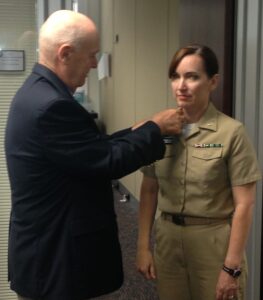
Immediately after retirement, Jack played a lot of golf. Then he signed on with the Vitro Corporation, a major U.S. defense contractor, working on software for missile systems and eventually becoming a vice president. In 1993, Vitro merged with Tracor Applied Sciences, giving Jack the chance to try something new. After he and Cynthia moved to Pinehurst, North Carolina, Jack went back to college at Sandhills Community College to study golf course management. The program was exceptional, giving Jack the opportunity to work at the Augusta National Country Club, the home of the Masters Tournament, from January through May of 2000. After Jack graduated from the Sandhills program in June 2000, Jack went to work for the Forest Creek Country Club in Pinehurst, overseeing Course 2 design and installation. He even began teaching courses at Sandhills Community College and worked the U.S. Men’s Open Tournament at Pinehurst and the U.S. Women’s Open Tournament at Pine Needles Golf Club.
Jack retired from golf course management in 2011. He remained active in his community, serving on a part-time citizens patrol for the Pinehurst Police Department. He and Cynthia are now enjoying full retirement, keeping up with their daughters, Susie and Kathy, and their families. In fact, Kathy followed in her father’s footsteps and joined the Navy, now serving as a Captain and active-duty attorney in the Navy’s Judge Advocate General’s Corps.
Voices to Veterans is proud to salute Captain Jack E. Helmann, U.S. Navy (Retired), for his many years of service to our country. Not only did he serve during the height of the Cold War, but he also went in harm’s way on the “gun line” on ships off the coast of South and North Vietnam, providing supporting fires to troops on the ground and saving American lives during the Vietnam War. We recognize the sacrifices he and his family made – the family separations and wartime deployments when he stood the watch, defending our nation. For all he has done, we wish him fair winds and following seas.
If you enjoyed Jack’s story, please sign up for the Voices to Veterans Spotlight monthly newsletter by clicking here. Once each month, you’ll receive a new written veteran’s story and a new podcast directly in your mailbox. Best of all, it’s free and you can unsubscribe at any time.
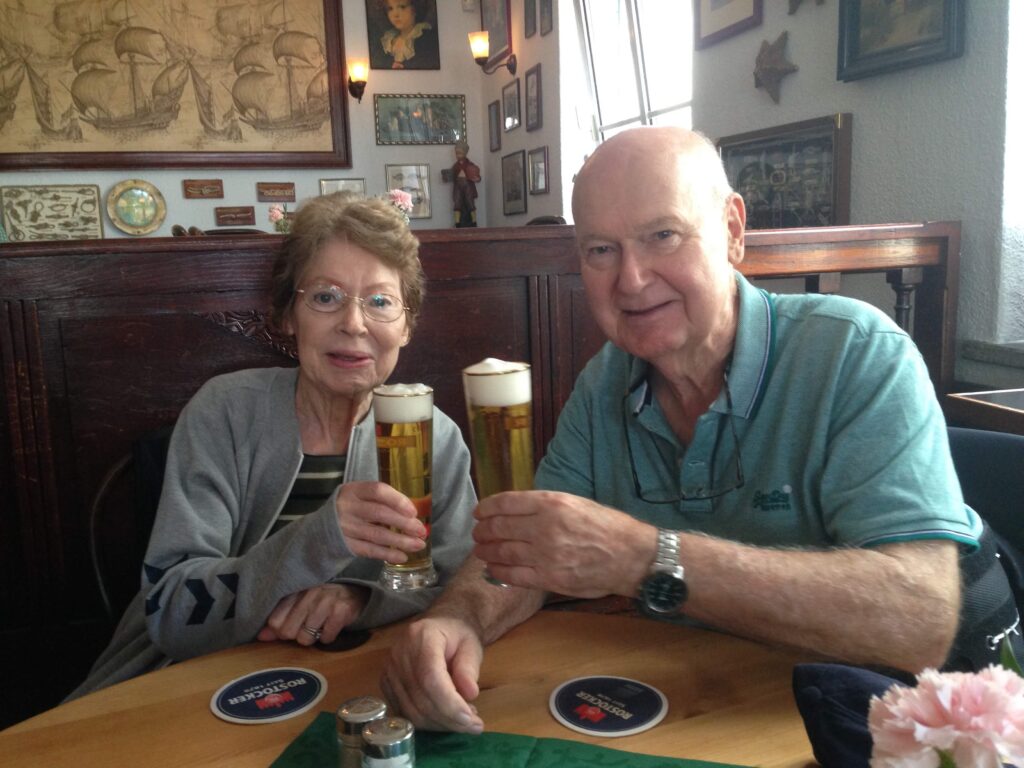

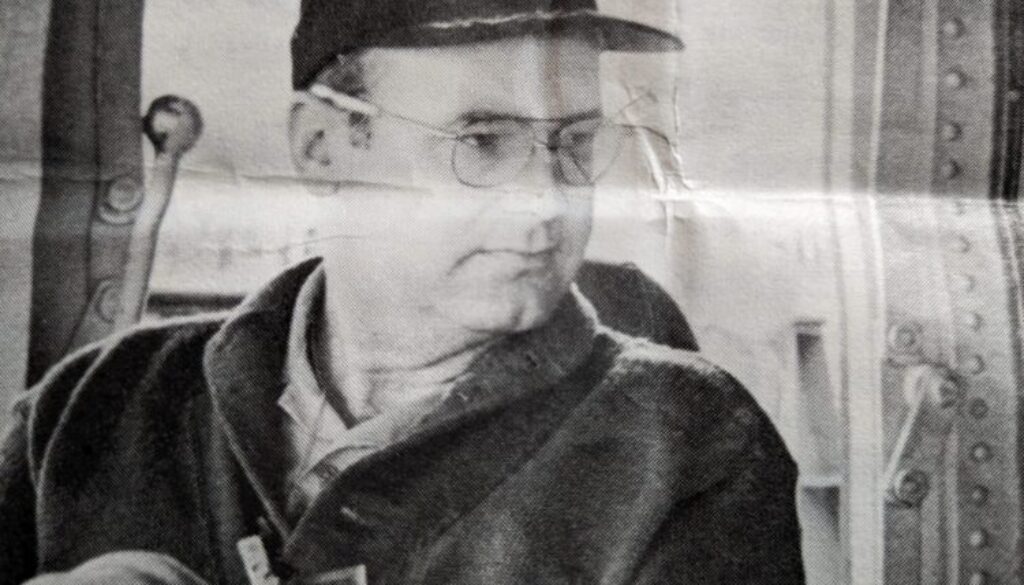

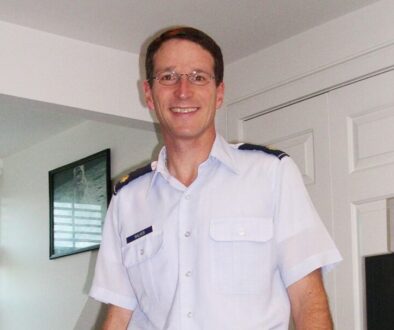
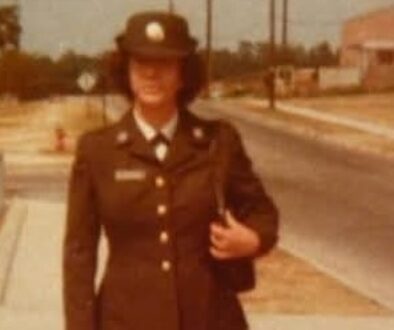
September 24, 2023 @ 12:21 AM
Jack was my boss aboard USS Jonas Ingram (DD 938), I was ASWO and Fire Control Officer while he was the Gun Boss. Best boss I ever had. By the way, when he had the accident in the Triumph TR4, I was in the passenger seat. We both were pretty well banged up. It was not his fault. We became close friends, and while in the Naval Hospital, we would sneak out in the evening to a local night club for dancing. Transportation was a Morgan I had just received from England. Jack had a cast on both legs, but he could stand in the middle of the dance floor and do the twist. At the time. I had 90 + stiches in my face, I would go over to ask a girl to dance, she would jump up horrified and run to the middle of the dance floor to twist with Jack. Much later, Jack and I ended up together in an ASW school in San Diego, he was a CDR heading to command USS Berkley (DDG 15), I was a LCDR, XO of a Mobile Inshore Undersea Warfare Unit (Reserve). Over the past 15 years or so, Jack, Cynthia and two other shipmates from Jonas Ingram and their wives have gotten together from time to time to tell tall tales and play golf. Although I’m Navy through and through, the Navy made a mistake by not promoting Jack to Admiral. John McKinley, RADM USNR (Ret.)
September 24, 2023 @ 7:58 AM
Admiral – Thanks for reading Jack’s story and for filling in the details on the Triumph story!
January 31, 2024 @ 6:41 PM
I really appreciated this bio on my old shipmate from the Waddell. He was my OOD many times while we conducted gunfire support to the troops ashore in Vietnam. I am delighted that Jack was so successful in his careers.
February 3, 2024 @ 8:19 AM
Michael – thanks for reading Jack’s story and for your service, as well!